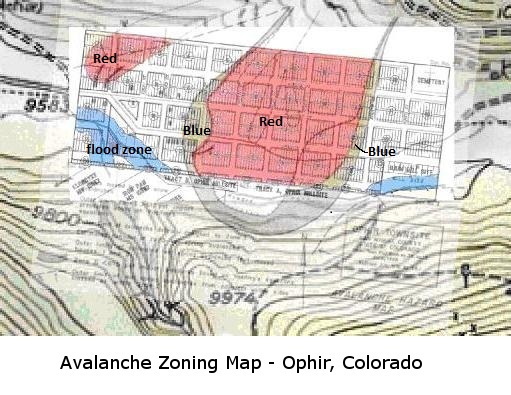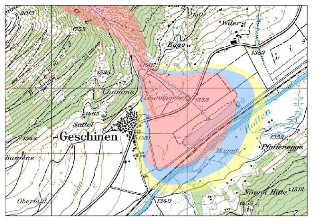| Home |
Who we are |
What we do |
Our projects |
Contact us |
TopicsIdentifying Avalanche Terrain Avalanche Mitigation Structural Defenses Acceptable Risks CGS Bulletin 49 Climate Change & Avalanches Avalanche Dynamics & Modeling Publications Slides ASCE SW Colo. 2012 Slides ISSW 2012 Anchorage Slides WSDOT Statewide PE Conference 2013 Slides ISSW 2014 Banff Poster ISSW 2018 Innsbruck |
Avalanche ZoningAvalanche Zoning is a process for identifying avalanche-prone areas on a map and regulating the types of land uses allowed based on the level of risk and severity of consequences of avalanches. The level of acceptable risk varies depending on the type of land use and local, regional and national attitudes towards individual choice and government's responsibility to prevent disasters and the responses that follow. Avalanche zoning in North America is based on concepts from Switzerland. The Swiss defined three categories of avalanche zoning in the 1950s following a severe avalanche winter of 1950-51. In Switerland, the "Red" or "High" Hazard Zone is defined as an area with either frequent avalanches (average return period of 30 years or less) or areas where reference impact pressures are ~600 psf or greater. Occupied structures are generally prohibited in the "Red" zone. |
A "Blue" or "Moderate" hazard zone was defined as an area where avalanches are less frequent (more than 30 year average return period) and where the longer return period avalanches (up to 300 years average return period) impart pressures of less than 600 psf on a large flat rigid plate normal to the direction of flow. Occupied structures are permitted in "Blue" zones only if the structures are designed to withstand the anticipated avalanche loads. Critical structures such as hospitals, schools and emergency response facilities are not permitted within "Blue" zones.

A "Yellow" (very low hazard) Zone is sometimes used to define an area beyond the Blue Zone in which avalanches which are very rare (average return periods of more than 300 years), or areas subject to the blast of low-density snow or air from powder avalanches with dynamic pressures of 0.3 tons/m2 (62 lbs/ft2). Land use is not restricted in the Yellow Zone, but design consideration to potential avalanche loads on structures is advisable.
In the United States, there are no national standards. Local jurisdictions have standards that fit local political and economic conditions (Ketchum, ID, Pitkin County CO, Juneau, AK).
Watch an American Avalanche Association Webinar video with Art Mears on Zoning
 |
Swiss Avalanche Zoning Map
|
